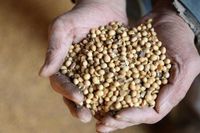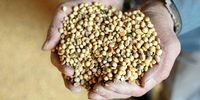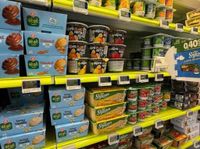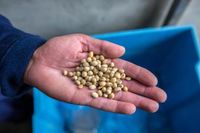On March 24, 2025, a significant health warning was issued concerning the excessive levels of isoflavones found in soy-based products, particularly affecting dietary recommendations in France. The National Agency for Food, Environmental and Occupational Health Safety (Anses) has voiced concerns over the potential hazards posed by these phytoestrogens, substances akin to female hormones.
These findings have led Anses to recommend that soy products—ranging from yogurts and milk to veggie steaks and aperitif biscuits—be removed from collective catering settings, which include crèches, schools, hospitals, and company restaurants. Aymeric Dopter, who leads the risk evaluation unit at Anses, explained, "These phytoestrogens can disrupt hormonal function and cause adverse effects on the reproductive system." This advisory aims to mitigate health risks by preventing overconsumption among young children and vulnerable populations.
The new recommendations are grounded in alarming statistics revealing that 76% of children aged 3 to 5, 53% of girls aged 11 to 17, and 47% of adults aged 18 to 50 exceed toxicological safety thresholds for isoflavones. For instance, a soy yogurt can contain up to 10.7 mg of isoflavones, far surpassing the daily limit for young children by more than 60 times. Furthermore, a standard 200 ml glass of soy drink contains approximately 22 mg of isoflavones, which exceeds the daily allowance for adults over 15 times.
Dopter emphasized that the aim is not to demonize soy as a food source but to draw attention to the unacceptably high levels of isoflavones present in many soy products. Anses has thus launched a campaign urging food producers to enhance their soy cultivation and processing techniques to lower isoflavone content. According to the agency, soy's isoflavone levels can fluctuate significantly depending on the variety, growing conditions, and processing methods.
The health risks associated with elevated isoflavone levels have been the subject of scientific scrutiny for years. Isoflavones, being phytoestrogens, can mimic estrogen and disrupt normal hormonal balance. This disruption has been linked to reproductive irregularities in both genders, including early onset of menstruation in young girls and cognitive impairments in boys. The health implications are dire, making Anses's new guidelines crucial for public health, especially among at-risk populations.
Given the significant part soy plays in vegetarian diets and its widespread prevalence in many processed foods, the agency's stance represents a notable shift in dietary guidelines. The recommendation mirrors broader concerns over the safety and nutritional quality of soy products widely available in school lunches and public cafeterias.
Anses has also initiated proceedings to share its toxicological reference values with European health authorities to foster a unified approach to managing isoflavone levels in soy-based products across the continent. Furthermore, the agency will participate in the revision of the 2011 decree concerning the nutritional quality of school meals. Nutritional guidelines need a thorough update to reflect current scientific understandings regarding soy consumption.
Experts explain that the establishment of isoflavone thresholds aims to safeguard public health by offering precise guidance on safe soy consumption rates. Anses has defined critical safety thresholds: 0.02 mg per kilogram of body weight for the general population and 0.01 mg/kg for particularly vulnerable groups such as pregnant women, women of reproductive age, and prepubescent children.
To give perspective, for a 30 kg child, the safe daily limit would be 0.3 mg, which equates to merely a teaspoon of soy drink. A woman weighing 60 kg should limit her isoflavone intake to 1.2 mg daily to stay within safety limits, highlighting the challenge posed by current soy product concentrations.
The recent recommendation to reduce soy in collective catering is part of a broader public health effort. Anses highlights that dietary diversity can help mitigate these risks. Alternative plant-based proteins such as legumes—lentils, chickpeas, and peas—are suggested as healthier options, given their significantly lower isoflavone levels.
In conclusion, the advisory to limit soy in public foods reflects an essential awareness of dietary impact on health, particularly for children and others who might be significantly affected by phytoestrogens. Moving forward, balancing the benefits and risks associated with soy consumption will be pivotal in shaping healthy dietary practices within the collective catering context.









